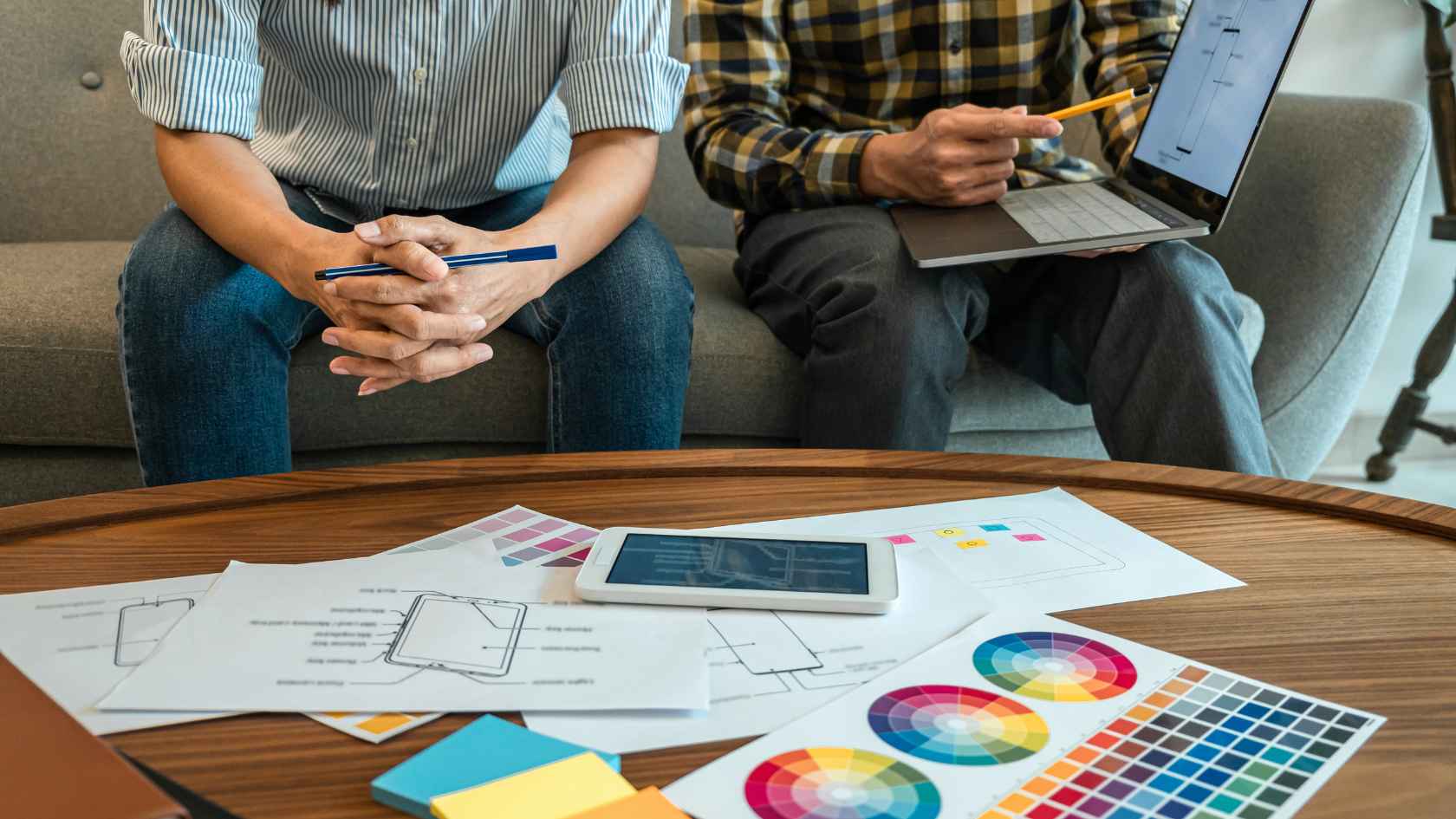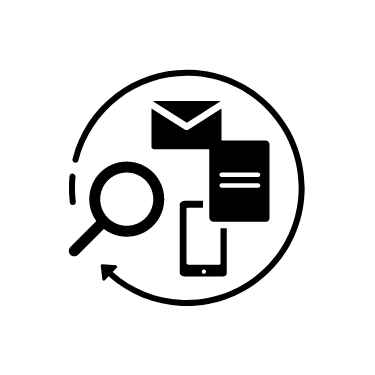


In today’s visually oriented-world, graphic design plays a crucial role. Professional graphic designers are highly sought after by many businesses looking to elevate their online presence with captivating visuals, user-friendly websites, and engaging social media posts.
And rightly so – working with a pro graphic designer is an absolute must when it comes to creating a killer brand identity and stunning graphic designs. They know all the ins and outs of design principles, trends, and techniques related to various types of graphic design. They’ll whip up visually captivating designs that really hit the mark with your audience.
Whether it’s a logo, website layout, or marketing materials, the work of a graphic designing expert is crucial in shaping the perception of a brand.
In this article, we will explore the multifaceted role of graphic designers, the skills required to excel in this field, the design process they follow, and whether anyone can embark on a career in graphic design.

What does a graphic designer do? The role of a graphic designer is a highly multifaceted one.
Even though seeking out a graphic designer specialising in one particular area of graphic design – such as logo design or website design – may be best depending on your needs, many businesses prefer to hire designers with graphic design skills to excel at various areas of graphic design.
Here’s what graphic designers’ work typically looks like.

One of the primary responsibilities of a graphic designer is to conceptualise designs that align with the client’s vision and brand identity.
In other words, they translate graphic design ideas into visual concepts by combining their creativity with an understanding of the client’s requirements. This involves gathering information, conducting market research, and identifying design elements that communicate the desired message to the target audience through graphic design.

To create designs that resonate with the local market or target audience, graphic designers must conduct thorough market research. The best designers stay updated on current design trends, consumer preferences, and cultural nuances to make sure that their designs are both visually appealing and culturally relevant.

Graphic designers play a crucial role in shaping a company’s brand identity. They develop logos, typography, colour palettes, and other visual elements that reflect the essence of a brand.
By diving deep into a company’s values, target audience, and industry, they create visuals that stand out from the crowd, helping businesses make an unforgettable impression in the market.
Graphic designers typically follow a structured design process that involves several stages. Let’s explore these stages briefly below.
At the beginning of a project, graphic designers thoroughly analyse the client’s brief. This is the foundation that sets the stage for the next phases of the graphic design process.
Before they start designing anything, your graphic designer will ask you to answer a series of questions that allow them to understand the ins and outs of your brand and business, project requirements, target audience, and desired outcomes.
Once the brief is clear, graphic designers will start brainstorming ideas. They’ll explore design trends, gather inspiration, and study the competition. This will help them develop a comprehensive understanding of the design landscape and generate ideas.
Brainstorming sessions may involve sketching, creating mood boards, or collaborating with other team members to generate a pool of design concepts.
Based on the research and the ideas from the brainstorming sessions, graphic designers will move on to creating the initial design concepts. To do that, they’ll combine their technical skills and creative vision to develop visual designs that align with the project objectives.
This stage involves experimenting with different design elements, layouts, typography, and color schemes. Designers continuously refine and iterate on their designs, seeking feedback and making adjustments until they reach the desired outcome.
Once the initial designs are ready, graphic designers will present their visual concepts to the client. This stage involves explaining the reason behind their design concepts and showcasing how those designs fulfil the project requirements.
At this stage, the designer will require the client’s feedback and suggestions to fine-tune the designs so they meet the expectations of their intended audience and fully align with their brand.
After incorporating revisions and finalising the design, graphic designers will prepare the final files for delivery. They’ll make sure that the design is optimised for its intended use, whether it’s for print, digital media, or other platforms. Once the client accepts their delivery, their graphic design work will be completed.
Professional graphic designers possess a combination of technical skills, creativity, and talent.
Can anyone become a graphic designer? Not necessarily. While anyone can learn technical skills, such as using graphic design software and graphic design principles, not everyone has the talent, creativity, and a sense of aesthetics to become a professional graphic designer.
That said, graphic design is a skill one can learn without necessarily having any degree. Many graphic designers possess all the necessary skills and talent to deliver fantastic work. Many freelance graphic designers excel at their work without having a degree.
Here are some essential skills and tools that professional graphic designers have mastered.
Of course, good graphic designers must possess excellent design skills. These include not only the mastery of graphic design principles but also using graphic design software such as Adobe Creative Suite, including Adobe Photoshop, Adobe Illustrator, and Adobe InDesign.
Graphic designers must have a keen eye for visual elements, such as layout, colour combinations, and typography. They must have an innate sense of aesthetics. They know what colours go together and how to create visually appealing designs that grab the eye.
On a strategic level, professional graphic designers can effectively arrange design elements to convey the desired message. This requires an understanding of composition, balance, and hierarchy within a design.
Imagine a world without graphic designers. While new computer software, photo editing software, and AI technology can generate graphic designs and create visual concepts in a few clicks, human graphic designers are still irreplaceable.
Yes, you can create visually appealing designs using software like Canva or generate stunning digital illustrations using AI-based tools like Midjourney. But these designs will never fully convey the right message or emotions you aim to convey.
So, if you’re wondering whether hiring a graphic designer is still a worthy investment, the answer is yes. If you choose the right graphic designer that can successfully fulfil your expectations, your investment will inevitably bring you a return in the long term.
Hey, I'm Callum. Here at Creato we re determined to produce creative . My only questions is, will it be yours?

Callum is the founder of Creato, a Sydney based design agency that specialises in creating holistic brands for Aussie businesses.
With a talent for crafting memorable and effective branding solutions, Callum has built Creato into a respected and successful agency. His work has been featured in various publications, including The Huffington Post, BuzzFeed, and Entrepreneur.
If you re interested in working with Callum and Creato to bring your brand to the next level, don t hesitate to get in touch!
Logo Package